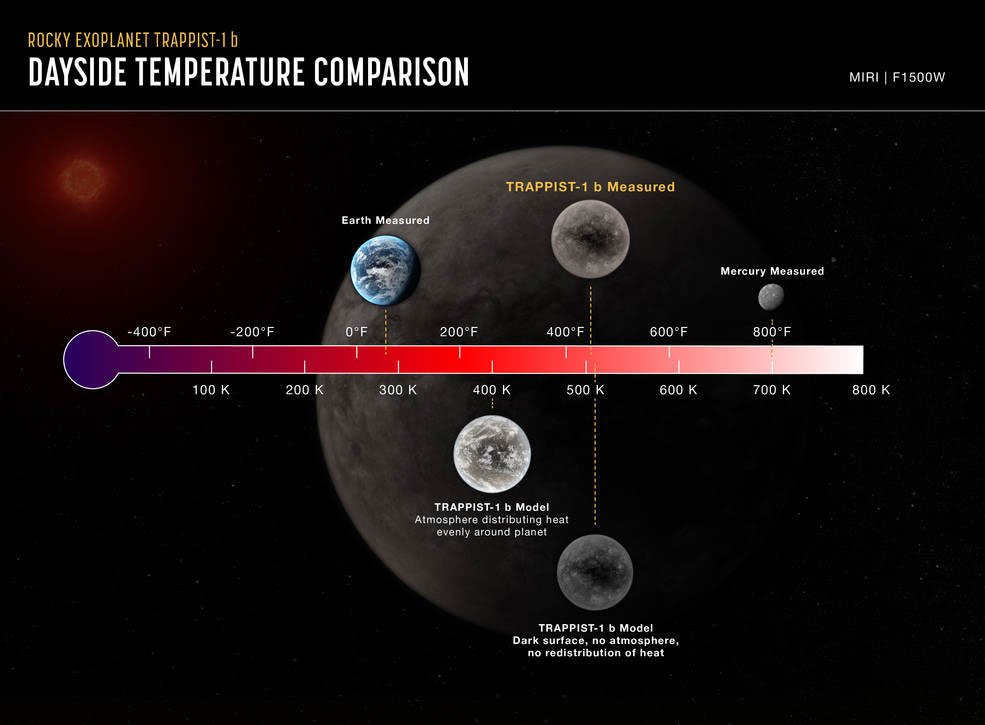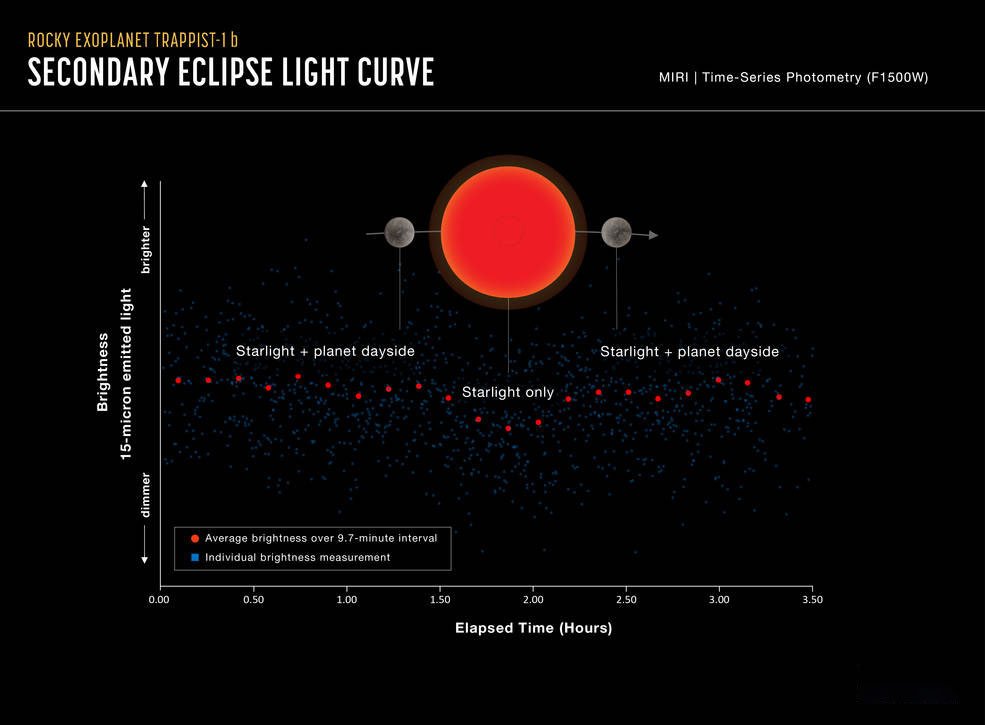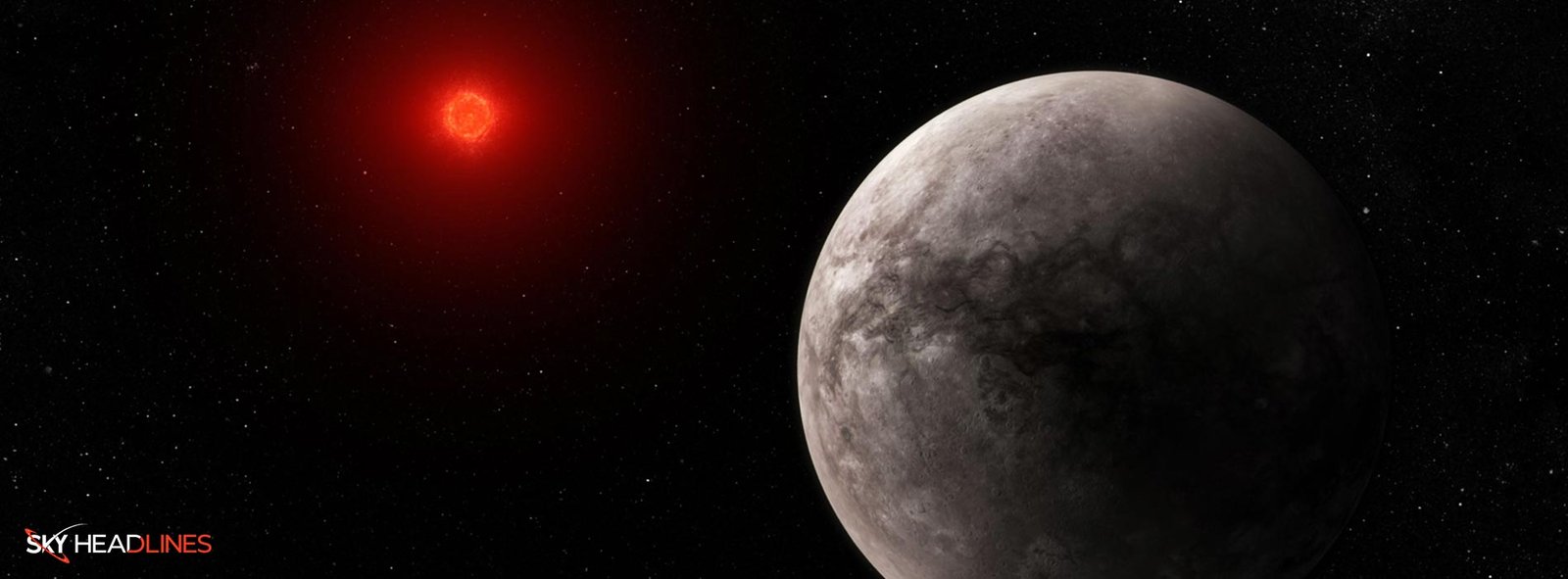NASA’s James Webb Space Telescope has enabled an international team of researchers to determine the temperature of TRAPPIST-1 b, a rocky exoplanet. The measurement of temperature relies on the planet’s emission of thermal energy. It is in the form of infrared light that the Mid-Infrared Instrument (MIRI) of the Webb telescope detected de. The team’s findings reveal that TRAPPIST-1 b has a dayside temperature of around 500 kelvins (roughly 450 degrees Fahrenheit). It suggests that it lacks a substantial atmosphere. This groundbreaking discovery represents the first detection of light emitted by an exoplanet as small and cool as those found in our solar system. An important milestone is determining the potential of planets orbiting small active stars. Like TRAPPIST-1, to maintain the necessary atmospheres to sustain life. Furthermore, this discovery highlights the potential of Webb’s MIRI to characterize temperate, Earth-sized exoplanets.
Astrophysicist Thomas Greene is the lead author of the study. At NASA’s Ames Research Center, he says, “These observations take advantage of Webb’s mid-infrared capability,”. Moreover, he said: “No previous telescopes have had the sensitivity to measure such dim mid-infrared light.”

Before we go further, let’s discuss,
Rocky Planets Orbiting Ultracool Red Dwarfs:
In early 2017, astronomers reported the discovery of seven rocky planets orbiting an ultracool red dwarf star located 40 light-years from Earth. These planets are noteworthy because their size and mass are similar to our solar system’s inner, rocky planets. Even though they all orbit much closer to their star than any of our planets orbit the Sun, they receive comparable amounts of energy from their small star. Despite being outside the habitable zone of the TRAPPIST-1 system, TRAPPIST-1 b receives a significantly high amount of energy from its star. It is due to its close orbital distance. Observations of this planet can provide valuable insights into the other planets in the system and other ultracool red dwarf systems.
Elsa Ducrot, a co-author affiliated with the French Alternative Energies and Atomic Energy Commission (CEA) in France, was part of the team that conducted previous research on the TRAPPIST-1 system. Ducrot contributed to the discussion by stating: “It’s easier to characterize terrestrial planets around smaller, cooler stars. If we want to understand habitability around M stars, the TRAPPIST-1 system is a great laboratory. These are the best targets for looking at rocky planets’ atmospheres.”
Ok, we should know this as well;
Why and how did the research team measure the temperature of TRAPPIST-1 b?
Previous studies of TRAPPIST-1 b using the Hubble and Spitzer space telescopes failed to detect any indication of a puffy atmosphere. Still, they could not conclusively eliminate the possibility of a dense one. To reduce the uncertainty, measuring the planet’s temperature was deemed necessary. “This planet is tidally locked, with one side facing the star at all times and the other in permanent darkness,” explained Pierre-Olivier Lagage from CEA, one of the co-authors of the study. “If it has an atmosphere to circulate and redistribute the heat, the dayside will be cooler than if there is no atmosphere.” The research team employed the technique of secondary eclipse photometry, using MIRI to measure the variation in brightness from the system as the planet moved behind the star.
While TRAPPIST-1 b does not emit visible light, it does radiate an infrared glow. By subtracting the star’s brightness during the secondary eclipse from the combined brightness of the star and planet, the team was able to accurately determine the amount of infrared light that the planet produced.

Now, let’s find out;
What is the significance of detecting a secondary eclipse using the Webb telescope?
Detecting a secondary eclipse using Webb is a significant achievement. Given that the star’s brightness is over 1,000 times greater than the planet’s, resulting in a change in brightness that is less than 0.1%.
Taylor Bell analyzed the data. He is a post-doctoral researcher at the Bay Area Environmental Research Institute. He clarified: “There was also some fear that we’d miss the eclipse. The planets all tug on each other, so the orbits are not perfect”. Moreover, he says: “But it was just amazing: The time of the eclipse that we saw in the data matched the predicted time within a couple of minutes.”
This study was carried out as a component of the Webb Guaranteed Time Observation (GTO) program 1177, one of the eight programs aimed at thoroughly characterizing the TRAPPIST-1 system during Webb’s first year of operation. Additional observations of TRAPPIST-1 b during secondary eclipses are underway. Now that the team has gained insights into the quality of data that can be obtained. They aim to capture a complete phase curve showing the variation in brightness throughout the planet’s orbit. Observing the temperature changes from day to night will enable them to verify whether the planet has an atmosphere.
Lagag, worked on developing the MIRI instrument for more than two decades. He says: “There was one target that I dreamed of having,” Moreover, he said: “And I dreamed of this. This is the first time we can detect the emission from a rocky, temperate planet. It’s a significant step in the story of discovering exoplanets.”





